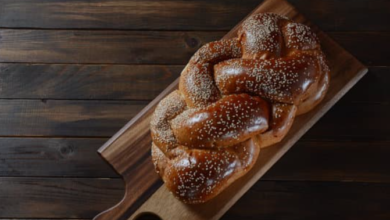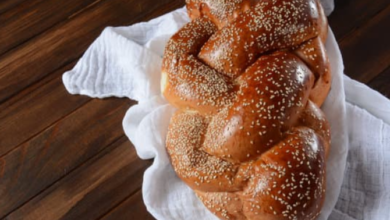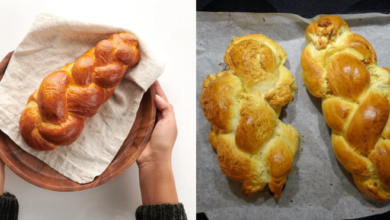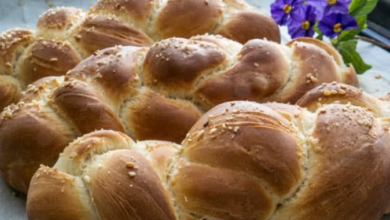What Is Challah Bread? (and How To Make It)
What To Know
- Challah bread, an iconic staple in Jewish cuisine, holds a special place in both religious and culinary traditions.
- It’s a braided, egg-rich bread with a golden-brown crust and a soft, slightly sweet interior.
- The origins of challah bread can be traced back to the Torah, the Jewish holy book.
Challah bread, an iconic staple in Jewish cuisine, holds a special place in both religious and culinary traditions. It’s a braided, egg-rich bread with a golden-brown crust and a soft, slightly sweet interior. Its distinct appearance and flavor have made it a beloved treat around the world.
The Origins of Challah
The origins of challah bread can be traced back to the Torah, the Jewish holy book. In Numbers 15:19-21, the Israelites are commanded to separate a portion of dough as a “challah” offering to the priests. This practice ensured that the priests had a steady supply of food, while also symbolizing the Israelites’ connection to God.
The Significance of Challah in Jewish Tradition
Challah bread plays a significant role in Jewish rituals and celebrations. It’s traditionally served on the Sabbath (Shabbat) and Jewish holidays, symbolizing the abundance and joy of these occasions. The loaf is often braided into intricate shapes, with each strand representing a different blessing or aspect of the holiday.
The Process of Making Challah
Making challah bread is an art form that requires patience and skill. The dough is made from a combination of flour, water, yeast, eggs, sugar, and salt. It’s then kneaded and allowed to rise twice. Once risen, the dough is divided into strands and braided into the desired shape. The loaf is then proofed again before being baked in a preheated oven.
The Variations of Challah Bread
While the traditional challah bread is plain, there are numerous variations that have emerged over time. Some popular variations include:
- Egg Challah: Made with an extra egg for a richer flavor and color.
- Honey Challah: Sweetened with honey for a more decadent taste.
- Raisin Challah: Studded with raisins for a fruity twist.
- Za’atar Challah: Sprinkled with za’atar, a Middle Eastern spice blend, for a savory flavor.
The Health Benefits of Challah Bread
Despite its rich flavor, challah bread can be a relatively healthy choice. It’s a good source of carbohydrates, protein, and fiber. The eggs provide essential vitamins and minerals, while the honey or sugar adds a touch of natural sweetness.
The Appeal of Challah Bread Beyond Jewish Culture
Challah bread has become increasingly popular beyond Jewish communities. Its unique flavor and texture have made it a favorite among bread enthusiasts worldwide. It’s often served at weddings, brunches, and other special occasions.
What You Need to Learn
Q: Why is challah bread braided?
A: The braiding of challah bread symbolizes the unity and interconnectedness of the Jewish people.
Q: What is the difference between challah bread and brioche?
A: Challah bread is typically made with eggs and water, while brioche is made with eggs, butter, and milk. Challah also has a denser texture than brioche.
Q: Can challah bread be frozen?
A: Yes, challah bread can be frozen for up to 3 months. Thaw at room temperature before serving.
Q: What is the best way to store challah bread?
A: Challah bread can be stored at room temperature for up to 3 days. For longer storage, freeze it in an airtight container.
Q: Can challah bread be made gluten-free?
A: Yes, gluten-free challah bread can be made using gluten-free flour.





